(Pictured above: the gay god Antinous.)
The gay god:
“When he first came to New York he used to stay for days, and wanted to live there; the Baths were a kind of paradise. But as the years went on, he would go and stay no more than forty-five minutes, since he either knew everyone there, had gone to bed with them, or worse, could no longer deal with people in that way – the way that used to thrill him (the beauty of the body, the communion of the flesh) and which now, as he was growing older, repelled him slightly and could not warm his heart.” – Excerpt from “Dancer from the Dance” by Andrew Holleran
The body lies at the center of the gay male cult. It is the incarnate god, through which the divine is immediately available. It’s that moment when gay men finally reach a tentative resolution to their inner struggle for both identity and love. Especially for those confused and frightened boys who often retreated and found solace in the imaginary world of daydreams and pornography, the body becomes the locus for our indescribable need to encounter masculinity. In Andrew Holleran’s landmark 1978 novel “Dancer from the Dance,” the protagonist wanders for years on a sort of endless Alice in Wonderland journey through the discos, gay bars, and bathhouses of New York City. Ultimately, the book chronicles one man’s quest to find self-fulfillment through “communion of the flesh.” Only, finally to realize that this false sort of fusion with sanctity is ever elusive, inherently disappointing and only comes at a high cost. In the late 1970s, no one in the gay community could have imagined the price they would eventually pay, in a matter of a few years, for their singular devotion to the male body.
This idolization of the male, and the body, is most explicitly exaggerated and fetishized in gay porn – with its over-emphasis on muscularity, the size of the penis, and the tendency to break apart into peculiar niche genres based on ever narrower objects of desire: including, but not limited to, pec-worship, arm-pit licking, and chest hair. Especially during the days before the internet, the fascination of pre-homosexual boys often focused on larger-than-life male heroes in television and film, starting with Clint Walker and Hugh O’Brian in the 1950s, moving onto Lee Majors, Tom Selleck and finally Channing Tatum. These men were both known for the mythic roles they embodied and for their tendency to constantly remove their shirts. This sort of hierarchical idolization of the masculine male, often concentrating on increasingly specific traits, was almost perfectly described, shortly before his death due to AIDS, by gay actor and model Tom McBride:
“There are two things which determine [gay] A-list: its having a good physique, having a hard body and the other is accomplishment…When I started working-out seriously, and I had a decent body, and then people realized I had a nice hair-chest pattern, that’s when I ended-up getting on the A-list.”
The hypnotic power of modern homosexuality goes beyond the immediate availability of pornography, but becomes most potent in the actuality of the gay male community where the male body is constantly on display – from “public service” announcements about Truvada to the pecking-order in the gay bathhouses and at “Pride” events where desirability, prestige, and status are not measured by education, social standing, or even a handsome face, but by the proportions and size of the body with a special focus on the male member; this fixation is almost prehistoric and strikingly similar to ancient practices of phallus worship. And, although gay aesthetics often have the propensity towards fragmentation, we see this again in particular porn films which focus on a single part of the body – the feet for instance, but the highest gay archetype is one in which all the aggregated aspects of masculinity are combined into one image; the earliest gay examples of this type are the highly exaggerated men populating the world created by Tom of Finland. Yet, many would argue that this same phenomena exists in male heterosexuality in the straight male preoccupation with large breasts and a rounded buttock, only within that dynamic, the often tempering influence of women functions as a safeguard against the imagery becoming an easily accessible reality – hence, the plethora of heterosexual men who solely explore their sexual fantasies through pornography, masturbation, and prostitution. Randy Shilts acknowledged this radical difference in genders and how they approach intimacy and sex in his groundbreaking exploration of the early-AIDS crisis, “And the Band Played On.” He wrote:
The trouble was that, by definition, you had a gay male subculture in which there was nothing to moderate the utterly male values that were being adulated more religiously than any macho heterosexual could imagine, right down to the cold, hard stares of the bathhouse attendants. Promiscuity was rampant because in an all-male subculture there was nobody to say ‘no’ – no moderating role like that a woman plays in the heterosexual milieu. Some heterosexual males privately confided that they were enthralled with the idea of the immediate, available, even anonymous, sex a bathhouse offered, if they could only find women who would agree. Gay men, of course, agreed, quite frequently.
Whereas in gay culture, because there are a large number of men willing to partake in various anonymous sexual behaviors, there was a resulting meltdown with the emergence of AIDS, in the heterosexual world, there has been a more subtle collapse in the deflating male who is rendered impotent when faced with the conventional routine of a sexually unadventurous woman.
Without the presence of the authentic feminine, which gay men can often only relate to when they become a slightly masculinized caricature in the form of aggressive and highly assertive female entertainers from Joan Crawford and Madonna to Beyonce, and in the incredibly pervasive fixation on drag queens, gay culture always tipped near the edge of extremism and self-destruction. For, at its worse, all-male societies historically become intensified into fascism as in Nazi Germany where the male body, explicitly realized in the swelling art of Hitler’s favorite sculptor Arno Breker, turns into an object of desire, reverence, and fear. These images, though clearly erotic, like pornography itself, often leaves the viewer incredibly unsatisfied. Because of their epic stature, they remain unrealized, cold, and often disdainful. On this pursuit of perfection, Andrew Holleran observed:
“…remember that the vast majority of homosexuals are looking for a superman to love and find it very difficult to love anyone merely human.”
The greatest example of this quest for the attainment of the perfect male bodily consciousness are the numerous commemorative statues of the Emperor Hadrian’s dead gay lover Antinous. After the young man drowned in the Nile, Hadrian deified his homosexual paramour and actively promoted the cult throughout the Empire – leaving behind a beautiful, but distant and dead god. Today, gay men continue to grapple with their need to somehow indelibly join with masculinity; in its most reckless form, this is evidenced in the continuing prevalence of HIV and increasingly virulent strains of sexually transmitted infections due to condomless sex which allow a more intimate bonding between penetrative partners. In some cases, the giving and receiving of semen is tantamount to a sacramental transfer of holiness – in this scenario, the masculine essence of one crossing over to another.
But the issue is megalithic and forever enshrined in gay culture, as evidenced in the initial preoccupations concerning the early gay civil rights movement that had everything to do with repealing sodomy laws. In the gay hierarchy of sacraments, the sex act expresses the consummate moment in which man is united with god, not marriage. It is by joining with the masculine, that we finally touch the transcendent. Many gay artists have wrestled with this experience; the most poignant probably being the painting “David and Me” by Steve Walker (1961-2012.) Below the massive hands and torso of Michelangelo’s statue stands the overwhelmed figure of the artist. The original, coming at the near-beginning of Michelangelo’s career, was a testament to his ability to balance his homoerotic eye for male beauty and his devotion to Catholicism; with one of his contemporary biographers remarking on the artist’s: “monk-like chastity.” Today, in the pagan ritualism of modern homosexuality, any thought of temperance, even among those who attempt to settle-down with one partner, is enormously abhorrent, hence the propensity for once lofty ideals to become base and perverse.
Only, these quasi-religious ceremonies, like the overblown gay icons themselves, are ultimately empty and shallow. Again, Holleran remarked:
They are a visual people, and they value the eye, and their sins, as Saint Augustine said, are the sins of the eye. And being people who live on the surface of the eye, they cannot be expected to have minds or hearts. It sounds absurd but it’s that simple. Everything is beautiful here, and that is all it is: beautiful. Do not expect anything else, do not expect nourishment for anything but your eye.
The resulting anxiety, emotional disturbance, and pervasive restlessness which saturate gay nightlife is incessantly unfulfilling, but incredibly addictive. Instead of losing faith in the gay gods, most habitually return to the same altar to kneel down in subservience again and again. Those who outwardly escape the cycle of unanswered prayers, frequently retreat into the world of domesticated gay monogamy and become curiously sexless as semi-listless eunuchs: Nate Berkus and Neil Patrick Harris. For that reason, their non-threatening and non-toxic personas, they have become incredibly palpable to bourgeoisie tastes. But the succeeding younger generations have rejected this new forced Puritanism and currently revel in hardcore gay sacredness whereby almost every day initiates a new pilgrimage to yet another headless torso found on Grindr. Despite current propaganda, the vast majority of gay men continue in their unsettled existence; for according to a recent a Gallup Poll, supposedly after waiting through decades of oppression, the percentage of gay men (and women) who are married after the Obergefell case rose less than 2% from 7.9 to 9.5%; and I would argue that the majority of these are women. According to a study (2010) from The Center for Research on Gender & Sexuality at San Francisco State University of gay male couples in a relationship: “45 percent had monogamous agreements, 47 percent had open agreements and 8 percent of couples had discrepant agreements where partners reported a different understanding of whether they have an open or monogamous agreement.” Consequently, today, the majority of HIV infections occur within the context of a steady relationship. It seems they cannot escape – the cult.
Beliefs:
The ideological dogma relating to homosexuality is most strident with regards to the origins of the gay orientation; for example, according to the LGBT correspondent at the online magazine “Slate,” the “born this way” theory has somehow been codified into law: “In study after study, biologists have found that homosexuality, at least in men, is clearly, undoubtedly, inarguably an inborn trait.” Yet many researchers have found that the evidence for a genetic link to homosexuality, at best, is “inconclusive.” In fact, the late Dr. Richard Isay, a gay man himself, who literally wrote the book on homosexuality as an “inborn” trait, once wrote this concession: “Like all forms of love, homosexuality remains mysterious and eludes our total understanding. Like all forms of love, it is a longing for a lost attachment. That longing, for gay men, is usually for the father.” Dr. Simon LeVay, a neurobiologist at both Harvard Medical School and the Salk Institute, also a gay man, who has spent most of his career trying to locate a gay genetic determinate for homosexuality, once wrote: “gay men do indeed describe their relationships with their mothers as closer, and their relationships with their fathers as more distant and hostile, as compared with how straight men describe these relationships.” But rhetoric such as that expressed in “Slate,” is not simply relegated to the pro-gay blogosphere; such organizations as GLAAD and BornPerfect, all repeatedly state that: “No one chooses to be gay:” or that “Gay is not a choice.” The well-funded advocacy group Truth Wins Out maintains that homosexuality is an “…intrinsic and immutable characteristic.”
The allegiance to this doctrine and the anger which spews out to those who question its veracity reached a boiling point when former Presidential candidate Dr. Ben Carson doubted the validity of an intransigent homosexual orientation. Subsequently, Dan Savage, the founder of the highly influential “It Gets Better” project – which has garnered the support of such famous and powerful people as Lady Gaga and President Barack Obama, responded: “If being gay is a choice, prove it. Choose it. Choose to be gay yourself. Show America how that’s done, Ben, show us how a man can choose to be gay. Suck my d**k.”
Only, within the cult of homosexuality, the greatest contempt is reserved for former gay men and women, or ex-gays, who leave the community; particularly those who seek out therapy, often classified as “reparative” therapy, in order to better deal with or eliminate unwanted same-sex attraction. They are quickly dismissed as “mentally unstable,” “irrational,” “self-hating,” “self-loathing,” and “homophobic,” among other epithets; however Dr. LeVay said that: “A person’s sexual orientation is not necessarily a fixed, life-long attribute. Sexual orientation can change…” Despite the fact that there has been no definitive scientific evidence for a biological origin of homosexuality, there persists an attitude of hatred and self-righteous indignation towards those who dare to question a belief that is based on emotion not fact. In order to keep those, who may be contemplating an exit, within the ranks, many have resorted to the worst sort of fear-mongering; according to GLAAD, concerning those who choose to undergo “reparative” therapy: “For each ‘success story’ featured by ‘ex-gay’ activists, there are hundreds who have gone through the programs with no change in orientation, but who have suffered trauma, depression, even suicidal thoughts or actions.” In other words, if you leave, you will not only become mentally unstable, but you might actually die.
Tammy Bruce, a lesbian and ex-president of the Los Angeles Chapter of The National Organization for Women has written extensively about what she calls the intolerance of gay tolerance: “I’ve heard too many times, publicly and privately, that gay people who don’t agree with silencing our critics are ‘self-hating’ and ‘traitors.’ Demeaning characterizations of group members who dissent from the ‘consensus’ is an obvious groupthink symptom.”
In their efforts, to prevent anyone from leaving homosexuality, gay lobbyists have pressured local, state, and federal authorities, usually through class-action law suits, to prohibit any therapy for minors which are non-gay affirmative.
Connected to the cult of homosexuality, and the hatred reserved for those who attempt to leave it, is the belief that homosexuals, specifically gay men, occupy some sort of exalted rank in society and within culture in general: Catholic gay apologist James Martin S.J. probably summed up this theory best when he stated:
Many, if not most, L.G.B.T. people have endured, from an early age, misunderstanding, prejudice, hatred, persecution and even violence, and so often feel a natural compassion toward the marginalized. Compassion is a gift. They have often been made to feel unwelcome in their parishes and in their church, but they persevere because of their vigorous faith. Perseverance is a gift.
In addition, it has been theorized that homosexuals are more “empathetic,” “altruistic,” and “tolerant” than their heterosexual counterparts. To bolster these claims there has been a flood of advocacy research claiming that homosexual men are less sexist and even less likely to exhibit racist tendencies: “Participants who had experienced discrimination because of their sexual orientation showed more racial empathy and positive racial attitudes.” This is utter nonsense; while some homosexuals have certainly endured neglect and persecution from family members and stranger alike, so have many other individuals. Therefore, gays can be just as vicious and ugly as anyone else.
Nevertheless, this delusion resulted in a kind of bizarre attitude whereby mothers wish for their sons to be “gay:” a mindset recently exhibited by such diverse celebrities as former Playboy model Jenny McCarthy and Oscar-winner Kate Winslet. In a sense, the gay man has become the “ideal citizen.” This has occurred because of the strategic acquisition of “intersectionality” by many in the gay movement – whereby homosexuals coopt almost every progressive social phenomena from environmentalism to the civil-rights movement; they have also tried to solidify into homosexuality an exalted form of supreme victimology: this was most effective when “marriage equality” proponents compared the homosexual struggle with what they saw as similar fights against prohibitions with regards to interracial marriage. However, the most disturbing example must be the attempt by some to glom onto the horrors of the Jewish Holocaust with the introduction of the “pink triangle” as a symbol of gay oppression; in reality, relatively few homosexuals, between 5,000 – 15,000, with no known statistics for the number of homosexuals who died while imprisoned, were interned in concentration camps by the Nazis, compared to the millions of Jews who were systematically slaughtered.
The enemies list:
During some of the most heated moments leading up to the decision by the Supreme Court to legalize same-sex marriage, President Obama compared the Black experience to that of gay men and women. Although tensions over this false comparison had been rising since at least 2012, immediately, there was a reaction, especially from African-American Christian evangelicals, in particular – the Coalition of African American Pastors (CAAP); what followed was an orchestrated smear-job against the Pastors, with several leftist gay affirmative reporters and news-sites declaring the group and its members “homophobic.” Their views also gained the ire of the George Soros funded People for the American Way, who tried to discredit the group by finding associations between the CAAP and the much vilified anti-gay marriage National Organization for Marriage (NOM). Interestingly, such diverse African-American entertainers and athletes as Tracy Morgan, Isaiah Washington, and Kobe Bryant have been labeled as homophobic. All of this pontificating caused former NFL prospect Michael Sam to say that he witnessed more racism in the gay community than he ever found homophobia among African-Americans: “It’s terrible. People have told me I’m not gay enough, people have told me I’m not black enough. I don’t know what that means. You want to be accepted by other people but you don’t even accept someone just because of the color of their skin?”
Simultaneously, the massively-funded (almost every gay celebrity contributes, from Tim Cook to Ellen Page) LGBT advocacy group The Human Rights Campaign (HRC) launched a webpage, “NOM Exposed,” which contains profiles of NOM leaders and prominent supporters. In addition, HRC detailed NOM connections to The Latter-Day Saints, the Catholic Church, and conservative Christian organizations such as Opus Dei, The Knights of Columbus, and Focus on the Family. There is a similar, but far more comprehensive enemies list of offenders at the GLAAD website, rather benevolently titled: “The Commentator Accountability Project,” which methodically details everything each person said that GLAAD perceives as anti-gay or homophobic; included on the list are African-American Bishop Harry Jackson, author and LDS member Orson Scott Card, and Fox News contributor Dr. Keith Ablow.
More recently, Maya Dillard Smith, an African-American woman who was also the director of the Georgia chapter of the American Civil Liberties Union, resigned over the ACLU’s support for public-restroom accommodations allowed to those who are transgender. She said she was immediately called “homophobic.”
While calling someone a racist was once the worst possible accusation that could be made against a person in the public square – it has since been passed by “homophobic:” because you can throw it against anyone.
Some of the rhetoric being espoused by highly respected pro-gay apologists drove the vitriol to the point of mass paranoia, that not only dismisses those who honestly question the gay cult, but also attempts to vilify and de-humanize them. Author Martin Kantor, MD, is a Harvard- trained psychiatrist, who has invented a whole cosmology of homophobia. He writes of the worst sort of homophobe: “Sadistic homophobes are equal opportunity haters, as full of hatred for gays as they are for everyone else. As they often do, here too they bend ‘scientific’ theory according to their own ends: to make it seem as if their hatred is legitimate, as when they call homosexuality a choice so that they can hurt those who make such an (outrageous, defiant) selection.” Here, the opposition to homosexuality is reduced to a sadistic homophobic hater – they are no longer people; this sort of reductionism was effectively used by the Nazis.
Within homosexuality, particularly during the 21st Century, there has been a preoccupation with shoring up the ranks; those who want to leave, or those who abandon gay, are quickly demeaned and vilified – mostly as an example to others in order to discourage anyone else from doing the same thing. There has also been a near obsessive fixation on “affirming” often highly confused young people who may exhibit homosexual tendencies or who “come out” as “gay.” The most specific in their advice, is the gay advocacy group PFLAG (Parents, Families and Friends of Lesbians and Gays) which mixes bad science with scare tactics in order to pressure parents into confirming their child’s homosexual orientation; they claim that:
“Sexual orientation and gender identity cannot be changed;”
“Positive, supportive responses lead to healthier children.”
“Negative responses can cause long-term damage.”
In other words, support your child’s decision: no matter what; according to PFLAG: “…the average age a child knows that they are LGB is 13.” Over the last few years, this reckless sort of “affirmation” resulted in the phenomenon of pubescent, and even prepubescent, so called transgender children being allowed to “transition.”
Those parents who disagree are denigrated as “homophobic;” with some extremists going as far as to recommend that gay children be removed from the custody of their “toxic” parents. But, the main thrust of their argument is centered on the contention that “reparative” therapy for same-sex attracted young people is a form of “psychological abuse.”
All of these efforts are a concerted effort by the gay community to consolidate the loyalty of their adherents and to ensure the steady stream of new members. Inherent within this system of obedience and aggressive campaigns aimed at those who disagree is an unusual swerve towards conservatism and a concerted push to coalesce around certain gay archetypes; this has been described as “the clone.”
Conformity and the clone:
The initial “gay clone” appeared in the Castro District of San Francisco and probably best illustrated in the hardcore drawings of gay artist Tom of Finland and in the “construction worker” from The Village People. The 1970s “gay clone” or “Castro clone” was recognizable by his adherence to a certain type of uniform and over-all look: blue-jeans, tight t-shirts, leather, muscular physique, and facial hair. Over the years, this clone oeuvre has narrowly expanded to include: twinks, twunks, daddies, bears, and the spornosexual. Sometimes these groups intersect – where you could conceivably have someone who is both a daddy and a bear. Sometimes they interact and attract the opposite type; this happens in a sort of illusionary image of harmony in gay pornography with the mainstay trope being the older bear or daddy ushering into “manhood” the hairless neophyte twink. In reality, most of the time – they tend to exclusively date each other, arising in the contentious Grindr euphemism from the highly in-demand spornosexual who wants: “no fems, no fats, straight-acting only.” According to an author from the gay periodical “The Advocate,” despite the ever changing world of fashion, the gay clone always endures: “There is certainly a clone ‘look’ that still permeates gay male culture; specific styles that identify someone as a card-carrying homosexual…”
Concurrent with the rise of “gay clones” in the 1970s, was the appearance of gay party drugs or what later become known as the “chemsex” phenomena. Numerous studies have consistently found that gay men are significantly more likely than heterosexual men to use recreational drugs; even the CDC stated –
“…studies have shown that, when compared with the general population, gay and bisexual men, lesbian, and transgender individuals are more likely to:
Use alcohol and drugs,
Have higher rates of substance abuse,
Not withhold from alcohol and drug use.”
The use of reactional drugs, especially the psychotropic drug Ecstasy, are thought to enhance not only a personal sexual encounter, but the communal gay experience; one study of attendees at a weekend gay male dance festival, found that 84% of the concert goers used Ecstasy during the course of the two-day event. According to the 2015 HIV Epidemiology Annual Report from the San Francisco Department of Public Health: 31% of gay men surveyed use “poppers,” 21% use methamphetamine, and 8.5% use cocaine; in comparison, according to the CDC, illegal drug use (among all substances) is 10.2% among the general population; according to the National Institute on Drug Abuse, 0.4% of the US population reported using methamphetamine in the past year. “Poppers” are an inhaled amyl nitrite drug popular among gay men. Although their production and sale is wholly unregulated, “poppers” are sold mostly in gay sex clubs and bars. Inhaling nitrites relaxes smooth muscles, including the sphincter muscles of the anus, making anal penetration easier and less painful.
The cult as community:
For those who often grew up as alienated and bullied little boys, the instant sense of acceptance and companionship within the gay community is almost magically euphoric. In homosexuality, we discovered that many men wanted to be our “daddy.” For a while, this embrace by an older masculine man temporarily erases the lingering unconscious childhood pain of our unloving fathers. In addition, the awkward kid who was always left on the sidelines suddenly is allowed to play with the other guys. The excruciating time when our feelings both confused and scared us almost magically evaporates like a bad memory because now we know countless others for whom those same feelings were equally shameful. But instead of remaining as a painful cause of shame, in the gay community those feelings are transformed into a source of pride, self-expression, and identity. In a real sense, “coming-out” is like being born again. And even if everyone from our old life, including our parents, were to reject us – it doesn’t really matter because nothing in the world could compare to this immediate awareness of ultimate belonging as a new family replaces the old.
When I entered the gay community of San Francisco at the height of the AIDS crisis, even in the midst of unimaginable suffering and death, I found that the horrors of a then incurable and largely untreatable terminal disease hardly destroyed the Castro District, but solidified the adherence of the men who remained, as well as those, like myself, that were just accepting their sexuality. Almost exactly 10 years after the assassination of the first modern “gay’ martyr, Harvey Milk, the compassion for those who were dying, as well as the determination of everyone else to somehow survive, while it brought out the best in the gay community, I also began to see the rise of an intransigent loathing for anyone who even passingly criticized or commented on the relationship between the AIDS epidemic and homosexuality. When he published “And the Band Played On,” in his response to criticism from the gay community about what they labeled as a “blame-the-victim mentality, author Randy Shilts said:
“The gay community didn’t want me to write about things like bathhouses that made gays look bad. But to me that was like going to one side of a burning building and covering the firemen trying to put out the fire, and then ignoring the guy on the other side who’s dumping gas on it.”
Years later, shortly before his death from AIDS, his opinion had changed very little:
“There’s no room in the gay community for people of good intention having different opinions. Either you have the opinion or you’re nothing.”
For the most part, the gay cult was more than willing to attack and destroy its own. This hatred explicitly materialized in the guerilla tactics employed by the AIDS advocacy group ACT-UP, in particular their 1989 desecration protest at St. Patrick’s Cathedral in New York City. The rather loose organization and militant angry sit-ins of these early activists rapidly transformed in the 1990s into well-funded lobbyists pushing for social change; in pop-culture this was manifested in the maniacal insistence that celebrities and politicians wear the AIDS red ribbon at every official event, especially at their various award ceremonies in Hollywood; it went as far as incensed reports in the gay press detailing who neglected to show their support.
Those same activists would later take up the charge against “gays” in the military and then push for the legalization of same-sex marriage. Part and parcel with this revision in the gay platform from a focus on AIDS research and healthcare to civil rights was a transposition of the gay clone. The most dramatic shifts can be seen from the 1970s to today: where the extremely masculine gay-porn star Jack Wrangler has been unseated by Ellen DeGeneres as the ultimate icon. In a sense, an idolization of sexual freedom has been replaced by same-sex stability and monogamy.
But this apparent embrace of heterosexual normalcy and family values reveals a major crisis within the cult of homosexuality. Because, the gay community which was once solidified under the intense pressure of AIDS continues to splinter into ever smaller often openly divisive sub-cultures: the largest separation is between a small minority of incredibly well-connected and politically vigorous elitists and the majority of gay men who neither marry nor semi-permanently partner-up. For example, before Oberfegall vs Hodges, relatively few homosexuals were married and even viewer decided to do so after gay marriage became legal. As result, although slut-shaming in the gay community is nothing new, going back took the days of the “condom police” in the 1980s, an opposing sect of gay men have revolted against this new image. In 2009, British actor Rupert Everett said:
“…this whole thing of forcing the idea of parenthood on us gay men is so bogus. Marriage? Babies? Please. I want to be illegal. I want to live outside the mainstream…These awful middle-class queens – which is what the gay movement has become – are so tiresome. It’s all Abercrombie & Fitch and strollers.”
The pheneomena of Grindr, the “Truvanda whore” and the subsequent reemergence of syphilis in the gay male community is a testimony to the fact that most gay men have singularly refused to bow before the sanitized gods of gay. For example, there has been an explosion in popularity of “bareback” porn films, with the subversive San Francisco-based production company Treasure Island Media creating an entire genre of bodily-fluid fixated movies whereby a single submissive male will yield to being mounted and inseminated by multiple anonymous men. In a sense, this stubborn commitment to promiscuity among gay men is a subconscious return to what actually lies at the heart of the gay cult. “Queer” theoretician and historian Michael Bronski once remembered how the 1970s sex dungeons of San Francisco became “a church,” and to him: “startling and sacred, even holy.” This experience is less organized, but continues in gay porn and quick-sex all-male social apps where any alleyway, public toilet, or backroom bar can become a place of sacrifice and atonement. Those who have retreated into what was once disregarded as heterosexist normalcy, were oftentimes those most traumatized during the AIDS epidemic of the 1980s and 90s when they literally witnessed the disintegration of the once body beautiful. As a reaction, almost immediately, gay culture set up new biohazard free idols in the form of the gay-for-pay porn star. Unbelievably conforming to almost every traditional masculine attribute, and presumably disease free due to their heterosexuality, they were a desperate means to clarify the gay pantheon. Regardless, many of them, lost faith in the worship of the flesh. However, curiously enough, every year at gay Pride, I see throngs of the happily coupled and wedded once again worshipping at the altar of masculinity as numerous floats, loaded down with bulging testosterone fueled gods, go drifting by.
Studies cited:
“Our comparisons of homosexually and exclusively heterosexually experienced individuals revealed few strong differences between the two groups in empathic concern, altruistic values, and altruistic and reciprocal behaviors.”
“Self-reported altruistic and reciprocal behaviors among homosexually and heterosexually experienced adults: implications for HIV/AIDS service organizations”
Susan D. Cochran, et al.
AIDS Care. 2009 Jun; 21(6): 675–682.
“Lifetime and last month use of mephedrone, ketamine, volatile nitrites (‘poppers’), sildenafil (Viagra), GHB, and GBL were all significantly higher in the MSM group compared to the non-MSM group. Lifetime use of cocaine powder, MDMA, amphetamine, and methamphetamine were also significantly higher in the MSM group.”
Recreational drug use in men who have sex with men (MSM) attending UK sexual health services is significantly higher than in non-MSM.
Hunter LJ, et al.
Postgrad Med J. 2014 Mar;90(1061):133-8.
“Drug Use among Gay and Bisexual Men at Weekend Dance Parties: The Role of Intentions and Perceptions of Peers’ Behaviors”
Rajeev Ramchand, et al.
AIDS Behav. 2013 May; 17(4): 1540–1549.
“Ninety nine percent of couples reported having an agreement. Specifically, 45% had monogamous agreements, 47% had open agreements, and 8% reported discrepant agreements.”
“Relationship Characteristics and Motivations behind Agreements among Gay Male Couples: Differences by Agreement Type and Couple Serostatus”
Colleen C. Hoff, PhD., et al.
AIDS Care. 2010 Jul; 22(7): 827–835.
“Nearly 70% of HIV+ MSM are estimated to have contracted HIV from a main partner…Our data suggest that reported monogamy may sometimes reflect intent or a non-traditional definition of monogamy rather than engagement in sex with only one partner. Nearly a quarter of men who indicated that they had only had sex with their partner for the duration of their relationship also reported engagement in anal sex with at least one non-main partner in the past 90 days. This supports previous research showing ‘monogamy’ to be an ambiguous term…”
“Open, Closed, or In Between: Relationship Configuration and Condom Use among Men Who Use the Internet to Seek Sex with Men”
Sonya S. Brady, et al.
AIDS Behav. 2013 May; 17(4): 1499–1514.

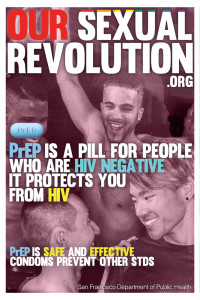
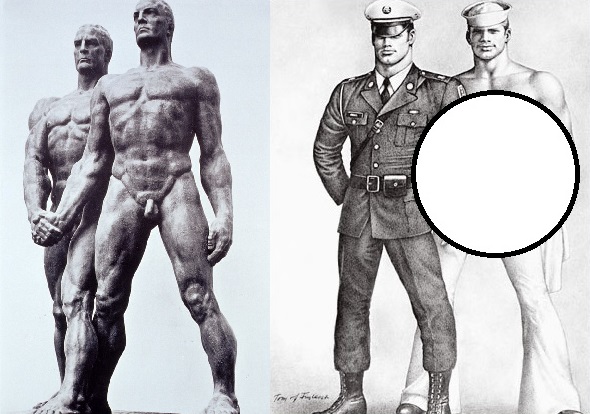

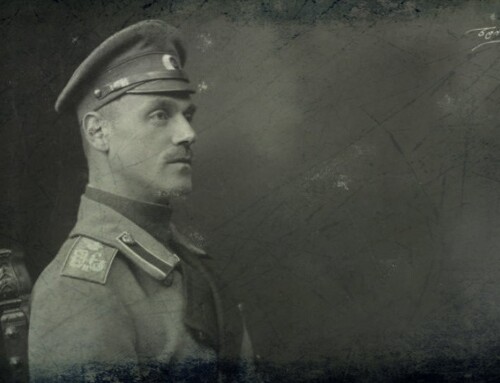
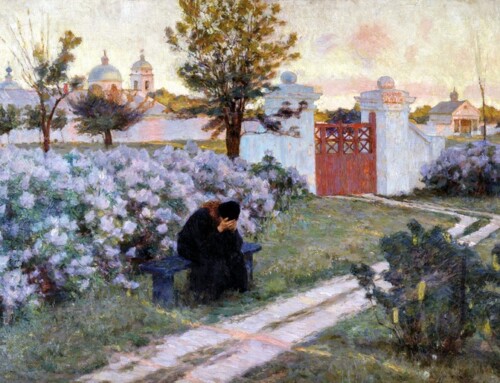
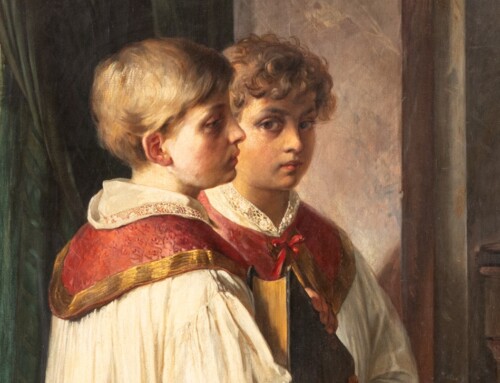
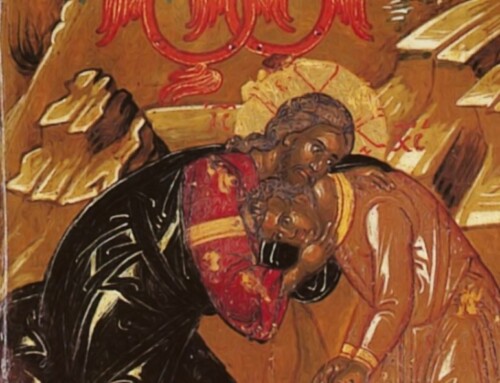
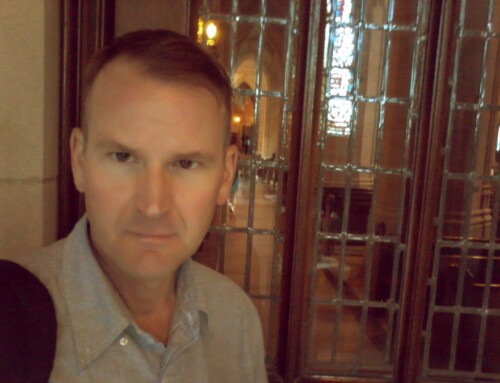
One of the quotes by Holleran reminded me of the saying:
Beauty is only skin deep,
But ugly goes all the way through…
“Raining on the (Gay) parade”
“The Band did not show up”
“The unhappy life of a Gay person”
“How the modern world has made Sodom and Gomorrah blush”
Just my suggestions for the titles of your next book for which this should be a chapter.
Thanks for posting this. I feel I have a better understanding of the gay culture. God bless you in your work!